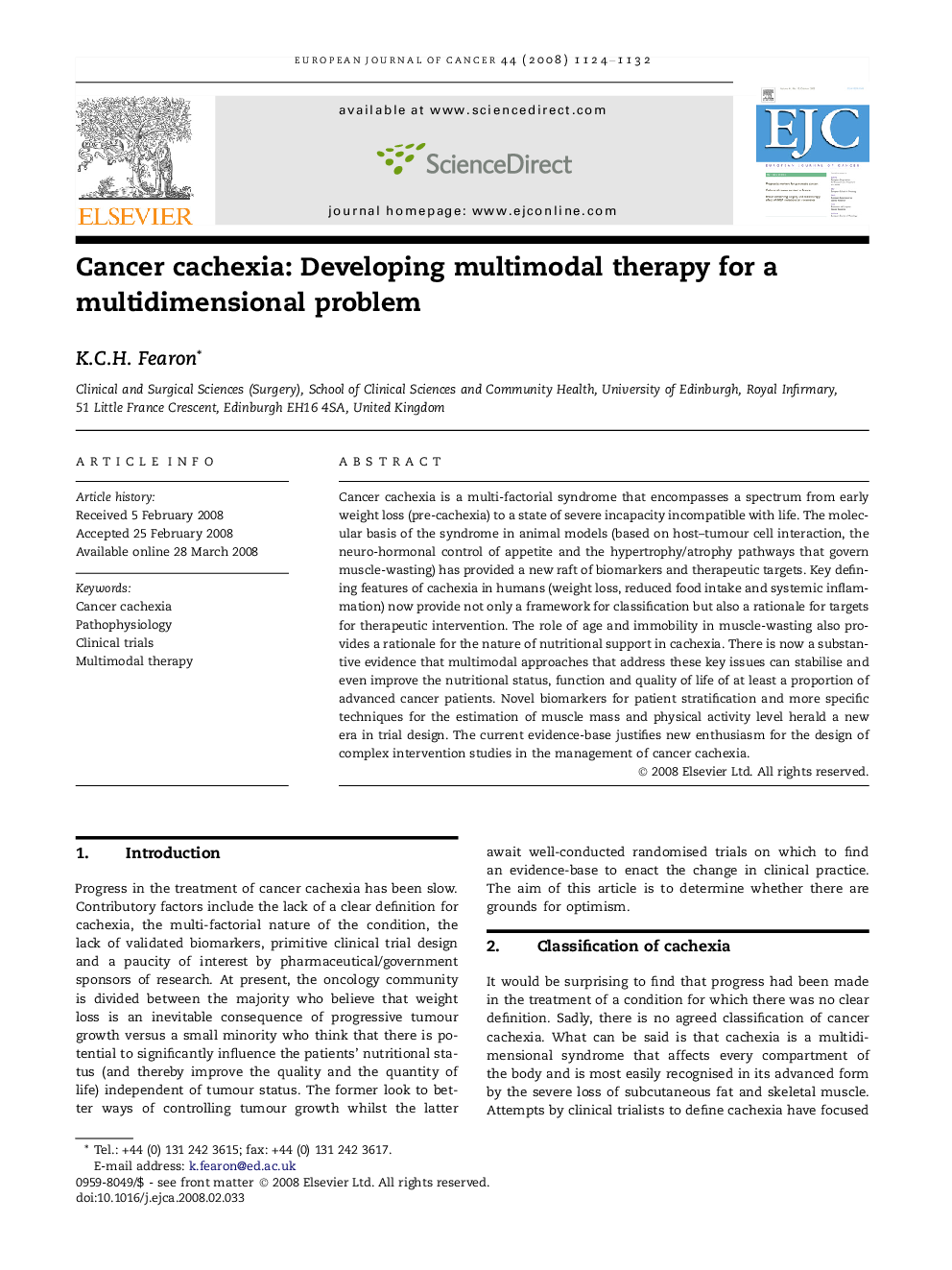| Article ID | Journal | Published Year | Pages | File Type |
|---|---|---|---|---|
| 2125173 | European Journal of Cancer | 2008 | 9 Pages |
Cancer cachexia is a multi-factorial syndrome that encompasses a spectrum from early weight loss (pre-cachexia) to a state of severe incapacity incompatible with life. The molecular basis of the syndrome in animal models (based on host–tumour cell interaction, the neuro-hormonal control of appetite and the hypertrophy/atrophy pathways that govern muscle-wasting) has provided a new raft of biomarkers and therapeutic targets. Key defining features of cachexia in humans (weight loss, reduced food intake and systemic inflammation) now provide not only a framework for classification but also a rationale for targets for therapeutic intervention. The role of age and immobility in muscle-wasting also provides a rationale for the nature of nutritional support in cachexia. There is now a substantive evidence that multimodal approaches that address these key issues can stabilise and even improve the nutritional status, function and quality of life of at least a proportion of advanced cancer patients. Novel biomarkers for patient stratification and more specific techniques for the estimation of muscle mass and physical activity level herald a new era in trial design. The current evidence-base justifies new enthusiasm for the design of complex intervention studies in the management of cancer cachexia.
